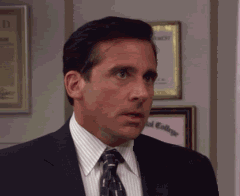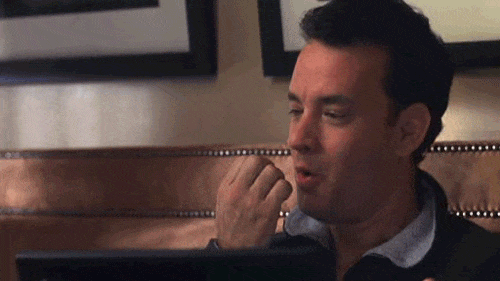For most of us, our home is our largest asset. So why is it that we pay such little attention to the coverages we put in place to protect it? Your homeowners insurance coverage can may leave you exposed.
If you bought your home 10, 20, 30 years ago, have you reviewed your coverage with an independent agent to make sure your coverages are current and that you are receiving the best bang for your buck?
Chance are you haven’t (and you’re not alone).
The good news is, assuming you haven’t had a major claim where you were forced to discover your homeowners insurance deficiencies, it’s not too late.
The word “insurance” elicits emotions in people akin to “the registry of motor vehicles” or “root canal.”

But why?
For most, it’s because insurance is seen as “complicated” and “boring” and “expensive.”
Once you get past the stigma of insurance, the right coverage can provide valuable peace of mind and important protection for your family and your assets.
There is no better time than the present to do a comprehensive homeowners review with your agent. This may sound daunting but a good insurance professional can assess your risks and tailor your coverage specifically for you.
Here are the five homeowners insurance coverages you cannot do without:
Personal liability
A standard homeowners insurance policy (written on an HO3 form) is written as a package policy, which includes the property coverage, as well as personal liability. Yes, this means the policy will automatically include personal liability.
However, all too often we see that the coverage falls well short. The base policy includes $100,000 in liability coverage. If a lawsuit gets into a courtroom, $100,000 won’t go very far before you have to dip into your own pocket.
Personal liability claims may include (but are certainly not limited to):
- Your dog getting a bit too excited and biting a visiting child
- A serious injury in your backyard swimming pool
- A loose brick in your walkway, leading to a trip and fall and a ride to the local ER
It costs around $30-50 a year in additional premium to go to a $500,000 coverage for personal liability.
This is a NO BRAINER….. but it’s just start.
We will discuss the merits of the personal umbrella policy a little later on.
Personal Injury
While the personal liability coverage will respond if someone is hurt due to your negligence, Personal injury will not extend from the standard liability coverage.
When we speak about personal injury on a homeowners insurance policy, we are talking about libel, slander, defamation of character, wrongful eviction, invasion of privacy and false arrest.
In today’s connected world, EVERYONE should carry personal injury coverage.
Once you hit submit your words are out there, and maybe even more importantly, your kid’s words are out there.

Personal injury is excluded from the standard homeowners policy. It can be added to your coverage by endorsement for about $20-$30 a year.
It doesn’t take much these days for someone to serve you with papers for something you said online about their local business.
Between Facebook community pages and review sites like YELP, there is more exposure than ever when it comes to a libel or slander claim. In order for your homeowners policy to respond, you must carry Personal Injury coverage.
Replacement Cost
We have discussed in great depth the differences between Market Value and Replacement Cost in another blog.
However, we’d be remiss to not touch on it again here because this is far and away the most common question we get at our office.
The number one mistake homeowners make is not insuring their home to 100% of its replacement cost. The homeowners policy is designed to “make you whole.” This means the policy will pay the cost to rebuild your home after a covered loss. The key word there is rebuild.
As far as insurance goes, it doesn’t matter that your neighbor just sold their house for X or that the town has your home assessed for Y. What matters is the cost to rebuild the structure(s) as it stands today.
Building costs can vary depending on the style of the home, the materials used and the geographical area. A good rule of thumb is that it will cost between $200-$300 per square foot to rebuild your home after a total loss.
If available, you may also choose to cover the home for “Guaranteed Replacement Cost.” With this endorsement (read additional cost) the insurance company agrees to rebuild your home even if it costs more than the Coverage A – Dwelling amount on your policy.
Bottom-line, underinsuring your home could cost you tens of thousands of dollars and ultimately leave you unable to rebuild your home after a loss.
Water Backup / Sump Pump Failure
You’ve got a sump pump, it works great and you’ve never had an issue. Until you walk down your basement stairs into Hackett’s Pond.
Water in your home is a disaster.
Did you know that sump pump failure is excluded from the standard homeowners insurance policy?
Carrying water backup coverage is relatively inexpensive and will remove the exclusions in the homeowners policy for overflow and discharge from sump pumps and include coverage for water backups off premises.
Many carriers will limit the amount of coverage you can buy, but if you have a sump pump (which means without it there could be a water issue) buy as much coverage as they offer.
In the recent March storms here in Massachusetts, there were plenty of homes that had a good sump pump and no electricity. Unless the pump has a battery backup, a good sump pump is rendered useless without a power source.
In this case, without the additional coverage by endorsement, the water in the basement in going to soak your savings account.
Umbrella coverage
Every homeowner should carry an umbrella policy (and people that don’t own a home as well).
There I said it.
If you own a home, a car, you have children, you have a job or even a pulse, you should have an umbrella insurance policy. I don’t think I have to tell you that our country has gone lawsuit crazy. With everyone looking to make an easy buck and lawyer advertising that they can get you more money for your claim, it is necessary to increase your liability limits.
An umbrella policy will provide excess limits above those offered on an auto or homeowners policy. Most carriers will not allow you to buy more than $500,000 in personal liability on your homeowners policy.
Lawyers are paid on a percentage basis. If there is a serious accident, do you think they are going to sue you for more than $500,000???
You bet they are.
If there is a judgement against you for $1,000,000, the insurance company will pay their $500,000. The remaining money comes from your bank accounts, your other assets and if need be, from the sale of your home, whether you wanted to move or not.
But I don’t have own a home, why would I need higher limits?
Ok so you rent an apartment and do not own a home. Once your assets are exhausted, your wages will be garinished. And they will make sure to garnish your wages just enough to keep your from filing bankruptcy. Very kind of them, right??
You will be on the dreaded “payment plan for life.”
Umbrella coverage, dollar for dollar, is the best value you can get in insurance. A standard $1,000,000 umbrella will run you between $200-$300 a year. That’s about $20 a month or three trips to Starbucks.
The Takeaway
Having the right coverage on your home insurance policy can mean the difference between the insurance company covering your loss and bankruptcy.
Take the time to review your homeowners insurance. If you do not currently carry these coverages, give your independent insurance agent a call to discuss adding them.
Have any questions about your coverage or want to make sure you’re receiving the best value? Reach out to our office, we’d be happy to help.
Get started here: Contact Richardson Insurance
